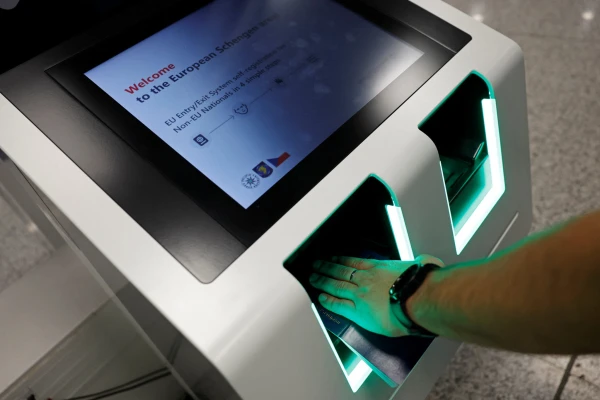
The full implementation will occur by spring 2026.
In October, a new border control system - the Entry/Exit System (EES) - began operating in the Schengen Area countries. Travelers will have to provide biometric data upon entry, and passport stamps for crossing the border will be abolished.
EES (Entry/Exit System) is a new automated border control system in the Schengen Area countries that records every entry and exit of third-country nationals. It will replace the old system of passport stamps with a record in a database, where the foreigner's passport data, a photograph of their face, fingerprints, as well as the time and place of border crossing, are stored.
The official goal of implementing EES is to speed up and modernize border crossing. However, there is another, more important reason - stricter control over migration and security. The system is designed to automatically identify individuals who have overstayed their 90-day stay, used someone else's documents, attempted to enter after being denied, or have been noted for violations.
Previously, Schengen Area countries had a common information system only for tracking identified violators, while in other cases, each Schengen country kept track of entries and exits independently. Stamps were applied manually, so in cases of entries and exits through different countries, counting the number of days spent in the EU took a lot of time. Additionally, if a foreigner encountered problems with law enforcement, determining the details of how and when they entered the Schengen Area took a long time, as it required sending requests to other countries.
As a result, thousands of people effectively violated the rules of stay in the EU, simply "getting lost" in the system or "resetting" their visa period with a short entry and exit.
Now, the Schengen Area is covered by a digital surveillance system that remembers every border crossing. Therefore, European authorities refer to EES as the "digital foundation of the new migration policy," aimed at tightening and increasing control.
How will entry into Schengen Area countries work with the new system?
Upon the first entry of a third-country national, including from Russia, Ukraine, and Belarus, after the new rules are introduced, border guards will scan their passport, take a photograph of their face, and collect fingerprints (children under 12 are exempt from fingerprinting, but not from photography). For subsequent trips, the biometric data will simply be matched with the record - a physical stamp will no longer be applied. Additionally, after providing biometric data, foreigners can cross the border through automated gates that verify biometric data against passport data (the passport must also be biometric).
Data on biometric information and border crossings will be entered into a common system accessible to border guards and law enforcement agencies of all Schengen countries. Biometric data is stored for three years - after that, it must be submitted again, even if your visa is valid for 4 or 5 years. Biometric data will also need to be resubmitted when changing passports - within the database, fingerprints and photographs are linked to the document number, not just the name.
Who will not be affected by the new border control system?
People with residence permits or long-term national visas that allow them to stay in Schengen countries for more than 90 days within a 180-day period do not have to provide biometric data. The downside of this exemption is that such individuals will also not be able to pass through biometric gates.
For holders of residence permits and permanent residence, as well as holders of long-term study, work, and family visas, passport control will be conducted in the usual manner. Yes, a stamp will also be placed in the passport.
In which countries is EES already operational, and in which is it not?
Since mid-October, the system has been launched in all Schengen countries, but in some of them, it is being implemented gradually and not at all border crossing points at once. Within six months, digital control is expected to cover all border points of the 29 Schengen Area countries. The full transition should be completed by April 10, 2026.
The Schengen Area does not include two EU states - Ireland and Cyprus. They do not use EES and do not collect biometric data upon exit or entry. If a person arrives in a Schengen country from Ireland or Cyprus, they will still have to provide biometric data - already at the border of the Schengen country.












Leave a comment